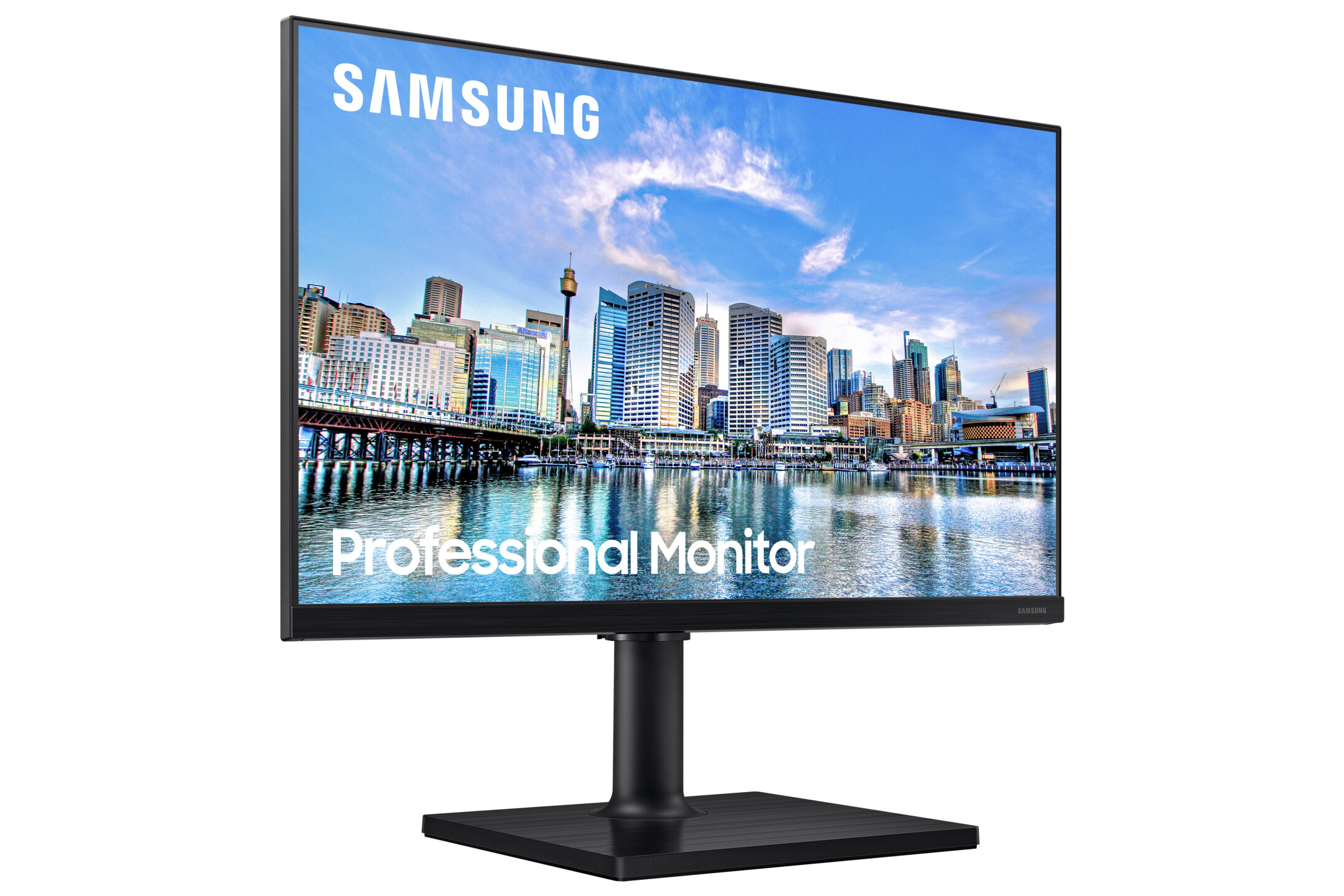











































£117.94*
- Resolution 1920 x 1080 Full HD
- Diagonal 24"
- Panel type IPS
- Refresh Rate 75Hz



Product information
- Screen: 1920x1080 Resolution, IPS Panel
- Technology: 5MS Response Time, 75Hz Refresh Rate, FreeSync™
- Connections: HDMI, Display Port, USB-Hub, Headphone
- Great For: Gaming and Productivity
All-round colour clarity
See every inch clearly from any angle. The IPS panel preserves colour vividness and detail across the whole screen. Now, whole teams can work comfortably on the productivity-boosting wide display and view accurate tones and shades from 178˚ all around, with no colour washing.
More screen to focus on
The borderless design maximises concentration. Take in everything with just one glance on a display that looks almost gapless when used in a dual-monitor setup. With no distractions in your way, get through larger sections of your to-do list during screen time.
More ways to connect
A variety of inputs bring a convenient computing experience. With 2x HDMI 1.4 ports and a display port, enjoy the versatility of being able to plug multiple devices straight into your monitor.
Tailored to your use
Superior design for the ultimate in everyday versatility. The height-adjustable monitor swivels, tilts and pivots for you to see your work any way you want. The sleek and clean design adds a touch of style to your office interior and is VESA-compatible for easy installation.
Fresh eyes achieve more
Protected eyes stay focused through the whole shift. Advanced eye comfort technology reduces eye strain for heightened concentration and greater productivity. Flicker Free technology continuously removes tiring and irritating screen flicker, while Eye Saver Mode minimises blue light emissions.
Technical data
| Name | Samsung F24T452FQR 23.8" IPS Monitor, 1920 x 1080 Full HD, 75Hz, 5ms |
|---|---|
| Article number | 1000016741 |
| GTIN/EAN | 8806090961779 |
| Manufacturer SKU | LF24T452FQRXEN |
| EPREL ID | 401474 |
| Model name | F24T452FQR |
| Brand | Samsung |
| Product Type | Monitor |
| Product Series | Samsung F Series |
| Technology | LCD |
| Panel type | IPS |
| backlight | LED |
| Resolution | 1920 x 1080 Full HD |
| Diagonal | 24" |
| Aspect Ratio | 16:9 |
| Viewing angle - Horizontal | 178° |
| Viewing angle - Vertical | 178° |
| Contrast Ratio | 1,000 :1 |
| Max. Brightness | 250 cd/m² |
| Response time | 5ms |
| Refresh Rate | 75Hz |
| Support - VESA | 100 x 100 |
| Product width | 53.9 cm |
| Product height | 37.1 cm |
| Product depth | 22.4 cm |
| Weight | 4 kg |
| Colour | Black |
| EEK Spectrum | A to G |
| Energy efficency class | E |
| Condition | New |
| Warranty | 36 Month |
| Warranty type | Bringin service Service and support information |
Downloads
Product safety
| Person responsible for the EU |
|---|
| Samsung Electronics GmbH |
| Am Kronberger Hang 6 |
| 65824 Schwalbach |
| Germany |
| sseg.comm@samsung.com |



